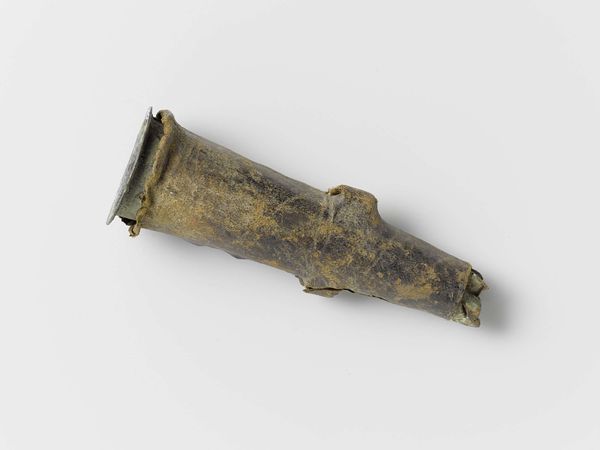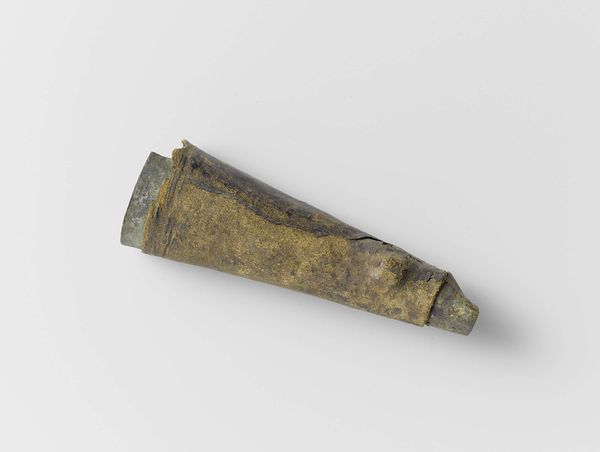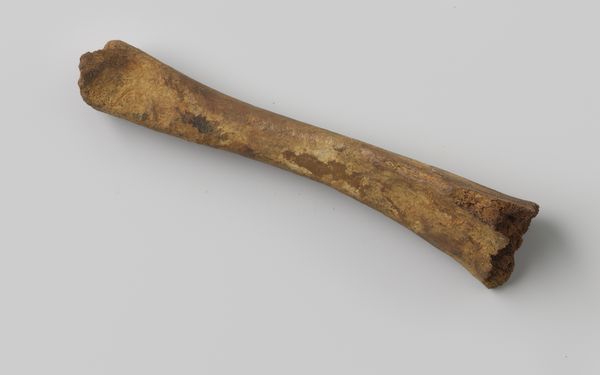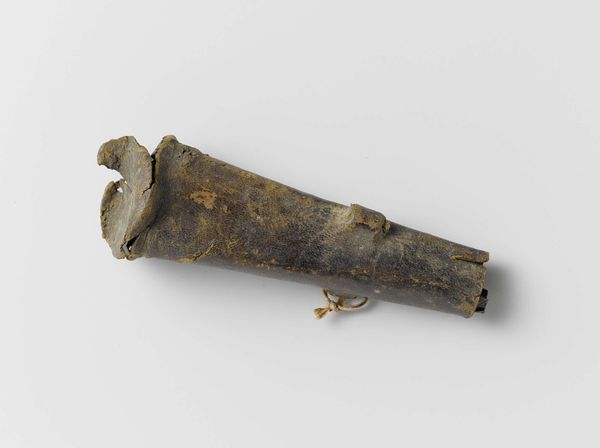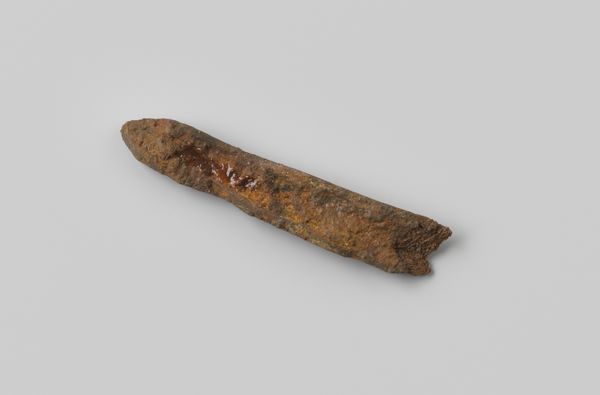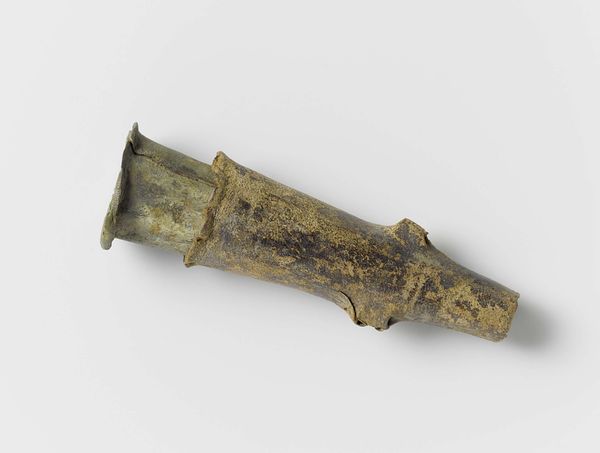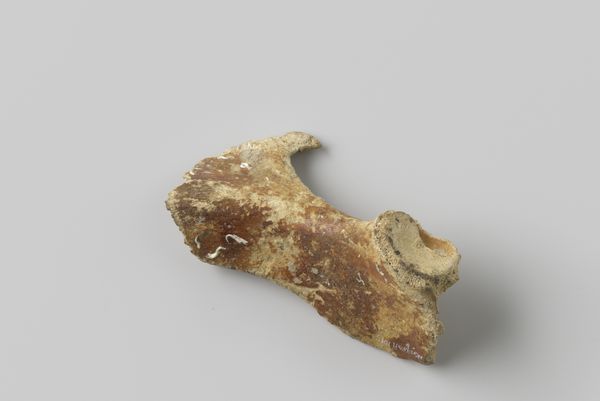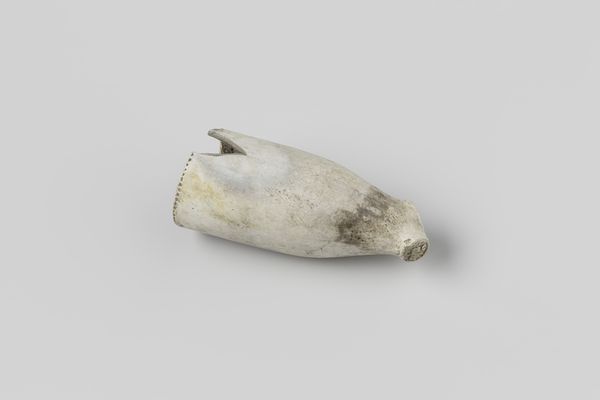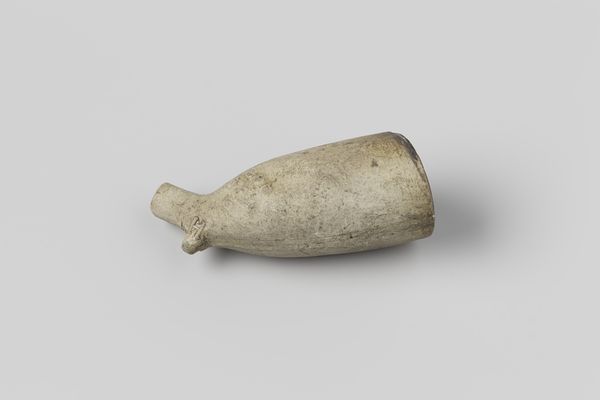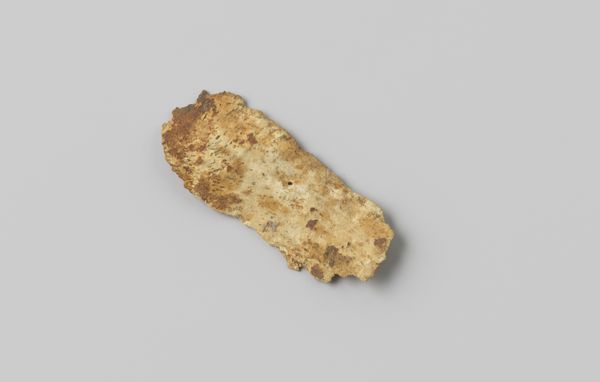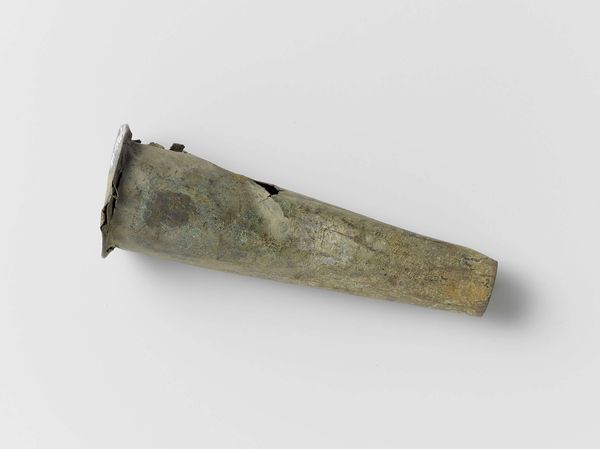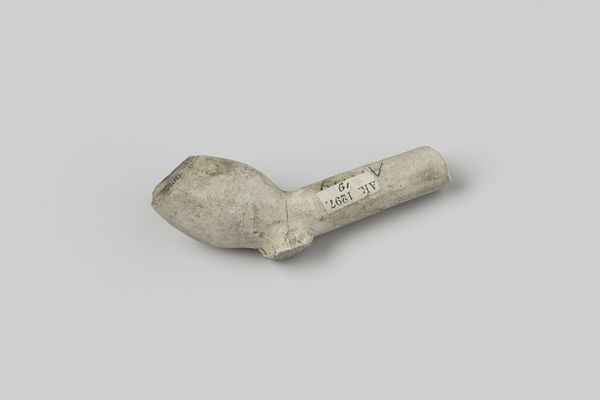
Fragment varkensbot uit het wrak van de Oost-Indiëvaarder Hollandia before 1748
0:00
0:00
ceramic, earthenware
#
dutch-golden-age
#
ceramic
#
earthenware
#
stoneware
#
ceramic
Dimensions: length 11.3 cm, width 3.2 cm, depth 2.5 cm
Copyright: Rijks Museum: Open Domain
This fragment of a pig's bone comes from the wreck of the Hollandia, a Dutch East India Company ship. The wreck was discovered in 1971 off the Isles of Scilly, near England. In the 18th century, the Dutch East India Company dominated trade with Asia. Ships like the Hollandia were vital to this enterprise, transporting goods and people across vast distances. But these voyages were perilous. The Hollandia sank in 1749 on its maiden voyage, likely due to navigational error. This bone reminds us of the human element of this trade, as food was needed to sustain the lives of the crew and passengers. The food was often preserved by salting, smoking, or drying it. It tells a story of daily life, and of death, at sea. Archaeological finds like this bone give insight into the social and economic history of maritime trade. Historians rely on a range of sources, from ship manifests to personal letters, to piece together a fuller picture. This fragment encourages us to think about global trade, and its impact on individuals and societies.
Comments
No comments
Be the first to comment and join the conversation on the ultimate creative platform.
